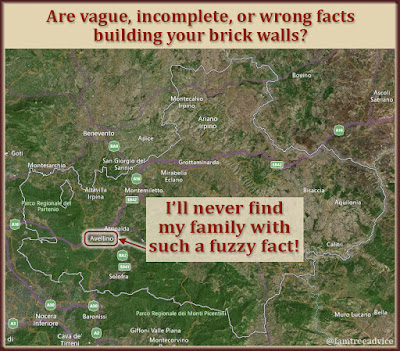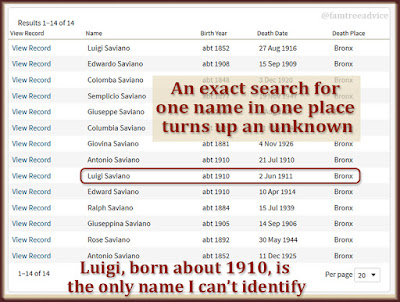If you work flat-out on only one task, you'll do it better and faster.
I started this blog almost 3 years ago with one idea. Encourage people to use business practices to make their genealogy research more professional. I think I've inspired a lot of you to treat your research more seriously.
Today let's look at a business practice that Information Technology (or IT) teams use. In a word: sprints.
You know what an athlete who runs a short distance at maximum speed is, right? A sprinter. A few years ago IT teams began using the term "sprints" to mean that they work together on one project for, say, 2 weeks. That's all they work on, giving it their full attention.
 |
| Sprint to the finish, keeping your focus on ONE genealogy task. |
They find that removing all other distractions helps them do their best work on any one project. And this is true for us, too. Here's an example.
I keep a list of things I want to do to improve my family tree. I call it my "rainy-day genealogy list." Can you relate to any of these?
- transcribe my taped interview of Mom and Dad
- sort out my photos and add more to my family tree
- review my old notebook of Ellis Island entries for people I need
- review my brother's college genealogy paper for more facts from Grandpa
- file away everything that's in my temporary "gen docs" folder
- add details to all my ship manifest images
- search for documents for all the people with partial birth and death dates
I started working on the last item this past weekend—and only that item. I'm treating it like a sprint, which means I'm giving it all my focus and working through it completely.
What I do is sort the list of people in my tree by birth date. My tree is 90% Italians from the 19th century, and I have vital records from their towns starting in mid-1809.
In one sitting, I went through everyone I'd marked as born in 1809 through 1814. I searched for their birth record. Some were born in another town, so I went online to find their birth records.
And with that total focus, I solved most of them. At least 2 or 3 times I found that a person in my tree with a missing birth date was really someone else in my tree with a birth date. I needed to merge them, and then everything fits.
 |
| Tackle the problem one chunk at a time until it's through. |
I've done this in the past with another limited project. I wanted to add full details to each census record image in my family tree. I created a format to use, and went through every single census image in my family tree's media tab. It took more than one sitting, but I got it done. Now, if someone finds my census image on Ancestry, they can follow the link to the original document.
Do you ever sit down to work on your tree with no specific goal in mind? I'll bet you're more likely to get bored that way.
If, instead, you pick one goal to work on, and give it your full attention, you'll get energized. You'll feel excited that you're getting through that goal. You'll have to hold yourself back from all the other goals you know you can finish.
Now, make yourself a short list of limited goals you want to achieve for your family tree. They should be specific ("add a census sheet image to each member of the family"), not open-ended ("see if I'm descended from royalty"). Pick one goal and make a commitment. You're going to work only on that goal and see it through to completion.
If it helps you, set a deadline. But only do that if that's what you need to light a fire under yourself. Personally, I get energized by seeing myself work through the pile. When I progress through the years of people with missing birth dates, that is my inspiration. When I work through all my ship manifest images to add missing details, I'll get excited when the bottom of the list is in sight.
Do whatever works for you, but take it seriously. Think of yourself as that sprinter on the track. Give it all you've got and set your new personal best.
If genealogy is your passion, you can strengthen your work in sprints. Tackle that backlog of tasks so you can move on to new discoveries.
Get inspired by organizational tasks:




















